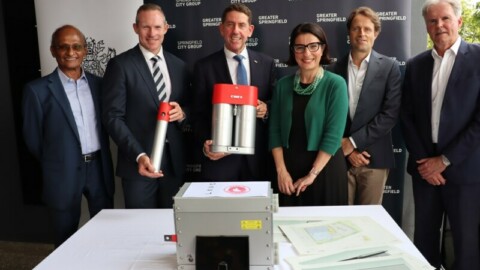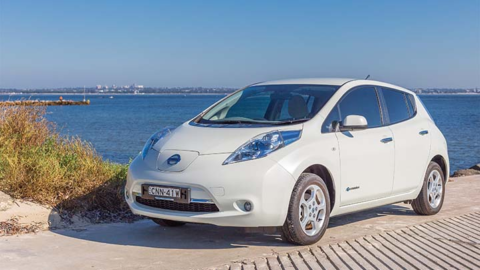From a distance, it might look like an aerial performance, but the work being carried out by a helicopter above the MacIntyre Wind Precinct is more than just a visual spectacle – it signifies the final stages of an important transmission connection project in south-west Queensland.
About 60km west of Warwick, the MacIntyre Wind Precinct is a mega wind farm being developed by ACCIONA Energia. At completion, it will have a generation capacity of close to 1,000MW of electricity and the potential to power up to 700,000 homes.
Powerlink Queensland has been engaged to ensure this renewable development is connected to the grid and its clean energy is accessible to Queenslanders and the wider National Electricity Market. The transmission construction works include 65km of 330kV transmission line, consisting of 166 structures and two new switching stations.
Transmission connection construction works kicked off in May 2022 and with more than 150 of the high voltage transmission structures already built, the stringing of transmission conductors and optical ground wire (OPGW) line is well underway.
Every year, more transmission lines are being constructed to facilitate the renewable energy transformation and help Queensland reach its renewable energy targets. Many of these lines are being planned in remote, less dense and geographically challenging terrain.
At the same time, the completion period for renewable energy projects is getting shorter which means it’s essential for transmission network service providers to employ the latest advances in technology and construction approaches to deliver projects as safely, quickly and economically as possible.
Efficiency in the air
Powerlink Project Director, Jahanzeb Rahman, said helicopters performing transmission line stringing is becoming more common across the industry particularly because it reduces community, landholder and environmental impacts, as well as construction timeframes.
“In the past this type of work had been carried out with heavy duty plant and equipment that had a significant impact on the environment as well as lots of manual handling and associated risk,” Mr Rahman said.
“On average a helicopter team can prepare and string up to 25 towers in a couple of days which helps to reduce the overall construction related impacts on the environment and landholders. It’s also considerably faster than on-the-ground methods, so what used to take weeks now only takes days.
“Every aspect of aerial stringing is meticulously planned by Powerlink and its contractors to ensure safe outcomes are achieved, with strict operational protocols in place such as installation of hurdles, traffic management, exclusion zones and on the ground spotters.”
The technique to string the transmission line involves using the helicopter to pull a steel cable, known as ‘draw wire’, from a brake winch on the ground. The helicopter pilot guides the draw wire onto a pulley attached to the arms of the tower.
Once this has been completed, the draw wire is attached to the transmission line conductor (cable), and a winch is used to pull the conductor off conductor drums and onto the towers.

The MacIntyre Wind Precinct transmission connection project involves 65km of transmission line, 166 structures (consisting of both towers and poles) and by the end of their activity the helicopters will have facilitated the installation of 1,245km of conductor and 130km of OPGW – which provides vital communication functions and protects the infrastructure from lightning strikes.
John Caldwell, Managing Director and Chief Pilot at Leading Edge Helicopters, has dedicated his career to this industry with over 5,500 hours of power line operations across the country and has been working on Powerlink projects since 2006.
For Mr Caldwell, the number one aspect of the works is safety with a lot of time spent at the front end of the job to plan works effectively with ground crew that operate the brake/winch sites and aerial crews on towers.
During the course of its program of work at MacIntyre, the helicopter will hang more than 33,810 insulators on tower cross arms, fly 18 conductor pull missions using draw wire (11x10km sections and 7x400m sections) and complete 45 direct OPGW pulls over the course of nearly 200 hours of flying.
So skilled are these pilots and so highly specialised is their training, that only a handful of people are capable of carrying out this work in Australia.
“They’re in high demand and tend to work all year round all over the country which can pose challenges in terms of project logistics and timing,” Mr Rahman said.
“This means we are constantly scanning the horizon for new technology and ways of work to add to our capability and streamline construction, maintenance and other work we need to do on our network across Queensland.
“We are currently investigating the potential for drone transmission line stringing on other projects in our portfolio and looking to incorporate this into our construction activity elsewhere.”
Meanwhile helicopter stringing will continue at MacIntyre Wind Precinct where it is expected to complete stringing and other transmission line work by August 2023. Powerlink’s construction work is expected to be completed by late 2023 with the wind precinct planned to start generating in stages from late 2024 onwards.

















